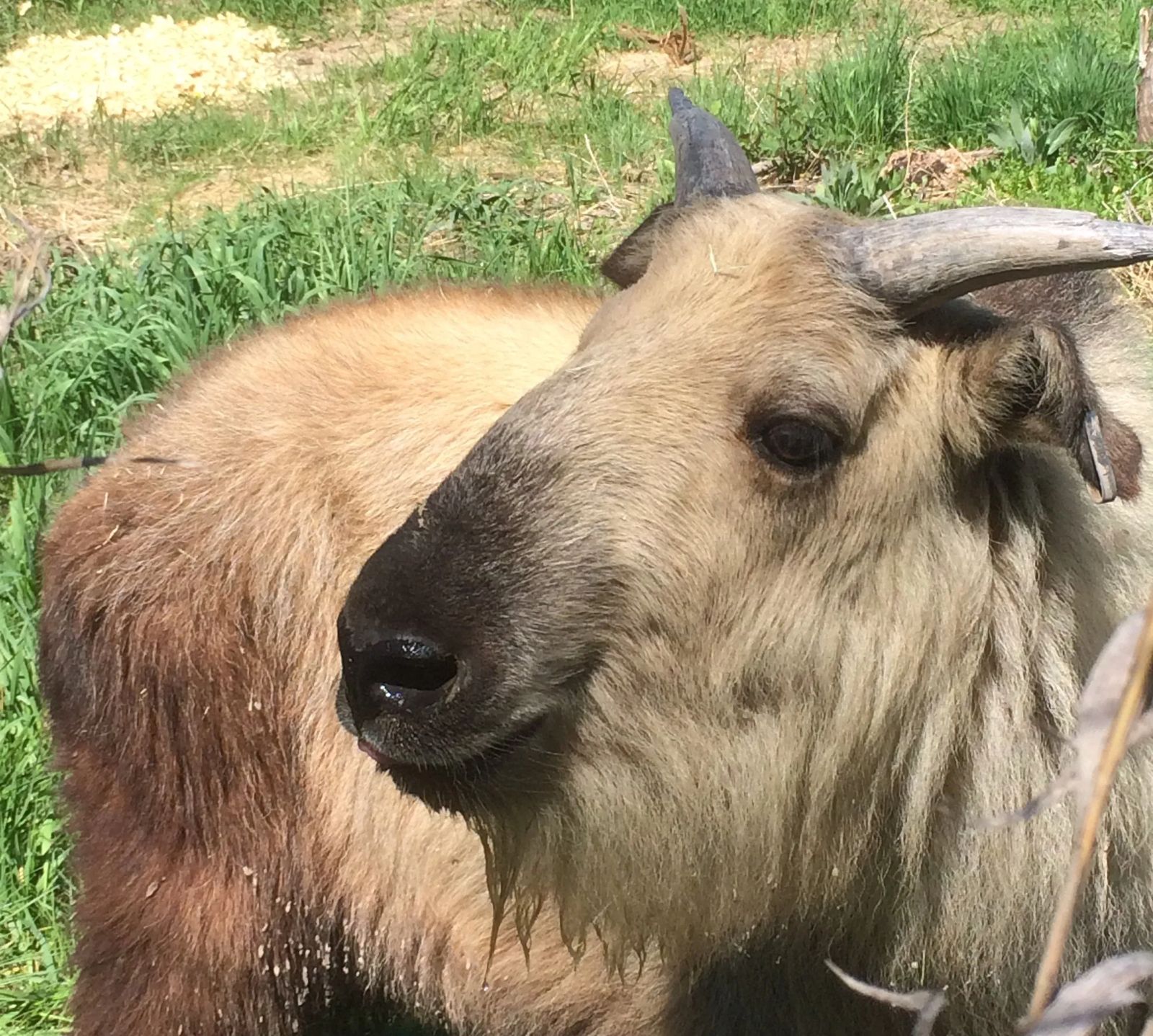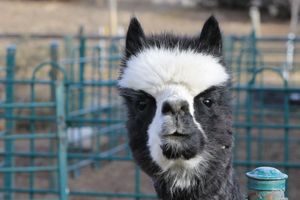
Sichuan Takin
Budorcas taxicolor tibetana
Sichuan takins are native to Tibet and the provinces of Sichuan, Gansu, and Xinjiang in China. There are a total of four subspecies of takin which include: the Sichuan, the Mishmi, the golden, and Bhutan takin. The takin looks to be a mix of a lot of their distant relatives like the musk ox (in size and shape) and sheep, especially the Barbary sheep (when it comes to their face). Their large snout and nostrils help to warm the air in the nasal cavity before it gets to their lungs and help prevent them from losing body heat when they are breathing. They have a secondary layer of fur to help them keep warm in harsh conditions and their skin releases oily substances that coat their fur to make it waterproof. Although takin are not widely known here, in China they are recognized as a national treasure. There is also a theory that the Beast from Disney’s ‘Beauty and the Beast’ is based on the takin due to their similar features.
Click HERE for a Sichuan Takin Activity Sheet!
Our Current Residents
Khan, Male – Born on April 16, 2015
Khan was born at the Pueblo Zoo in Pueblo, Colorado, and came to ZooMontana in 2016. Khan and Griff are siblings born a year apart and were reunited here at the Zoo. Khan is slightly larger but has smaller horns and a scar on his forehead from sparring with his brother.
Grif, Male – Born on April 1, 2016
Grif was born at the Pueblo Zoo in Pueblo, Colorado, and came to ZooMontana in 2020. Grif and Khan are siblings born a year apart and were reunited here at the Zoo. Grif is smaller than Kahn but has larger horns.
Taxonomy
- Kingdom: Animalia
- Phylum: Chordata
- Class: Mammalia
- Order: Artiodactyla
- Family: Bovidae
- Genus: Budorcas
- Species: Budorcas taxicolor
- Subspecies: Budorcas taxicolor tibetana
Animal Facts
Herbivores: mainly eat willow and pine bark, bamboo leaves, herbs, etc.
Population Status: currently listed as Vulnerable
Habitat: dense bamboo forest and will migrate from higher to lower elevations
Activity: diurnal- mainly active during the day

















































